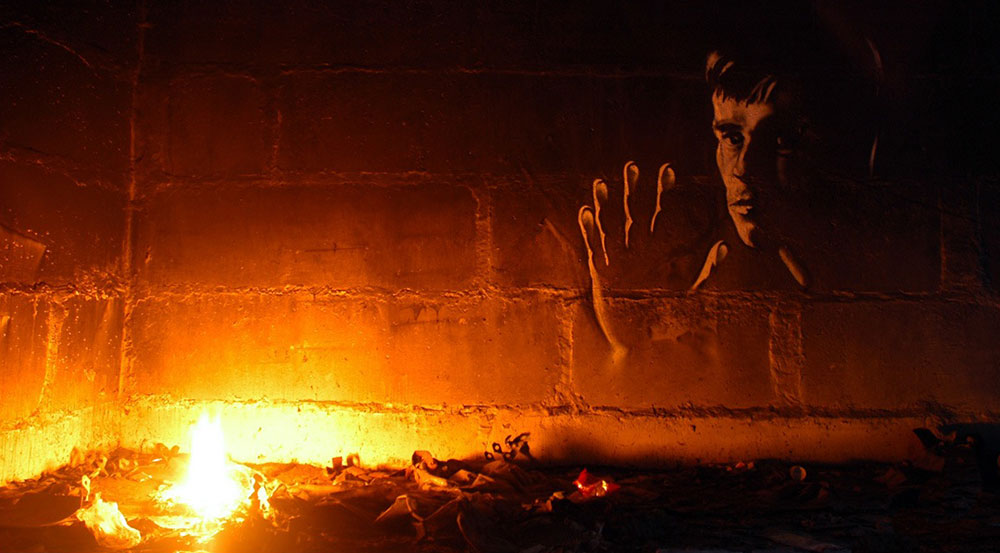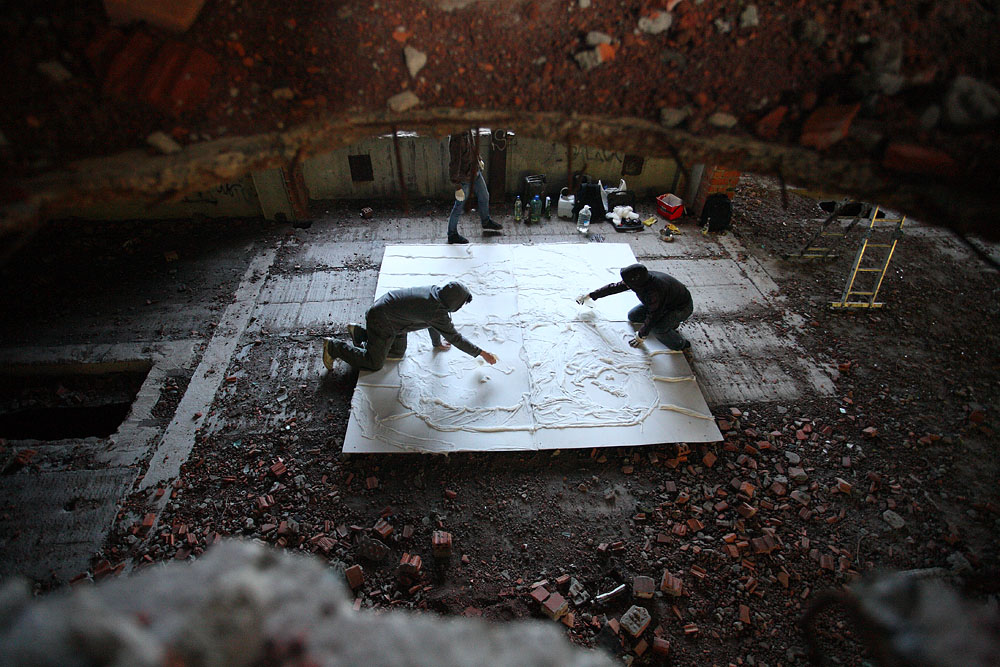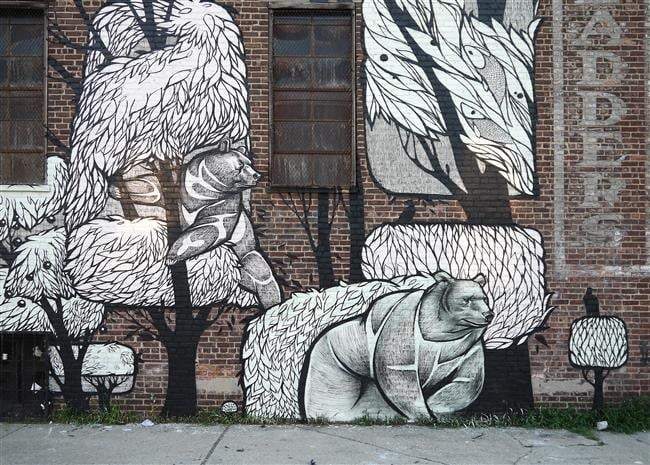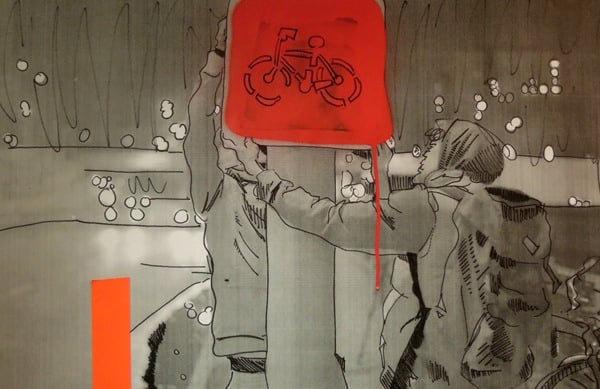Bold design: Russian street artist Timofei Radya’s lyrical critique of the Sochi Olympics
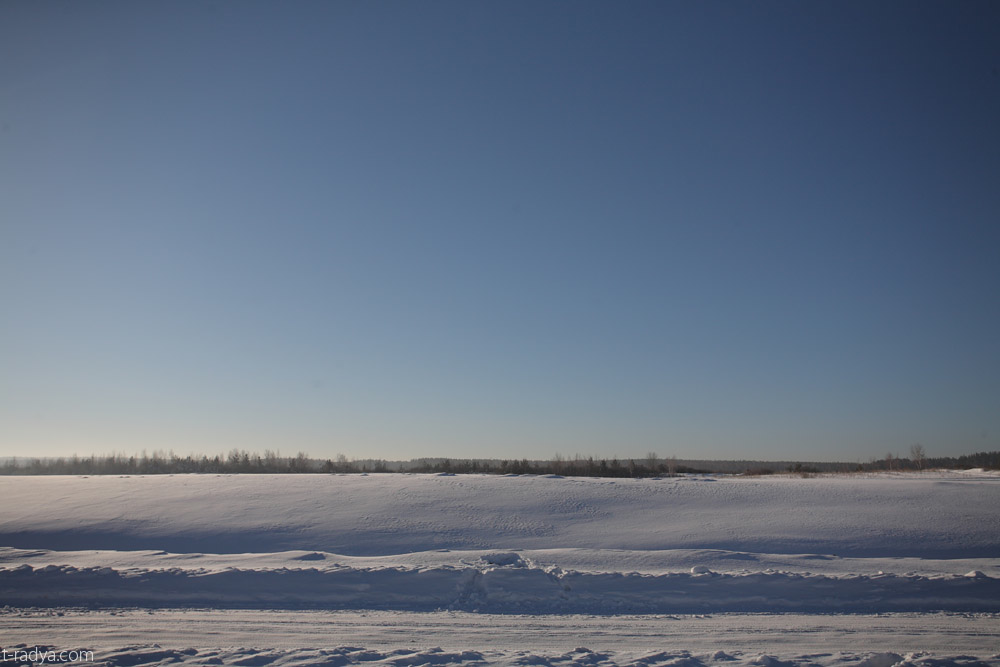
With his latest installation — a biting attack on the Sochi Olympics' $50bn price tag — Timofei Radya continues to show himself as one of Russia’s most important street artists
Russian street artist Timofei Radya has unveiled his latest installation, a poetic attack on the $50bn spent on the 2014 Sochi Winter Olympics, which made it the most expensive event in the history of the Games. Figure #2: Game comprises five metal Olympic rings, stuffed with 5,000 rouble notes, suspended between cranes over snowy plains in an undisclosed location. A video of his installation on his website shows the structure slowly losing its pink tinge as 2 billion roubles worth of notes blow away into the wind, settling on the ground below.
In a rare blog post from the artist, who is usually reticent about his work, Radya wrote: “For me ‘Figures’ is an attempt to find a visualised image for something you can’t talk about.” Moving away from conventional notions of art, Radya places his work firmly in the realm of what he refers to as “human culture”. “I think the term ‘culture’ seems more intimate and necessary than ‘art’. Maybe it sounds less egotistical,” Radya wrote.
After visiting Sochi as a potential location for Figure #2, Radya concluded that the current, unnamed spot was more suitable. On the importance of the location, Radya told The Calvert Journal: “The winter landscape and the winter fields in particular are very strong images for me. I think this space is very Russian, possibly the most Russian space. Also, I needed a space free from urban contexts.”
Radya has come to be known for his highly political works in his hometown of Yekaterinburg, which cover a range of themes from the achievements of the Soviet cosmonauts to the allegedy rigged parliamentary elections of 2011. Commenting on his decision to move from the urban to the natural landscape, he said: “The winter field is neutral. Visually it’s similar to a gallery space, but it’s not sterile like a white cube as galleries can be. The winter fields are full of wind, light and myths.”
Radya’s latest work is reminiscent of Figure #1: Stability, an installation built in a forest near Yekaterinburg last year. For the piece, a statement on the fragility of Russian state power, Radya constructed a pyramid of riot shields topped with a throne-like chair. The structure, which took hours to build, came crashing down in just minutes. Despite the similarities between the two installations, Radya maintains their independence. “I don’t use the term ‘sequel’,” he told The Calvert Journal. “For me, this kind of numbering is more like for articles from a dictionary. The piece is a statement in itself. I think that’s clear.”
